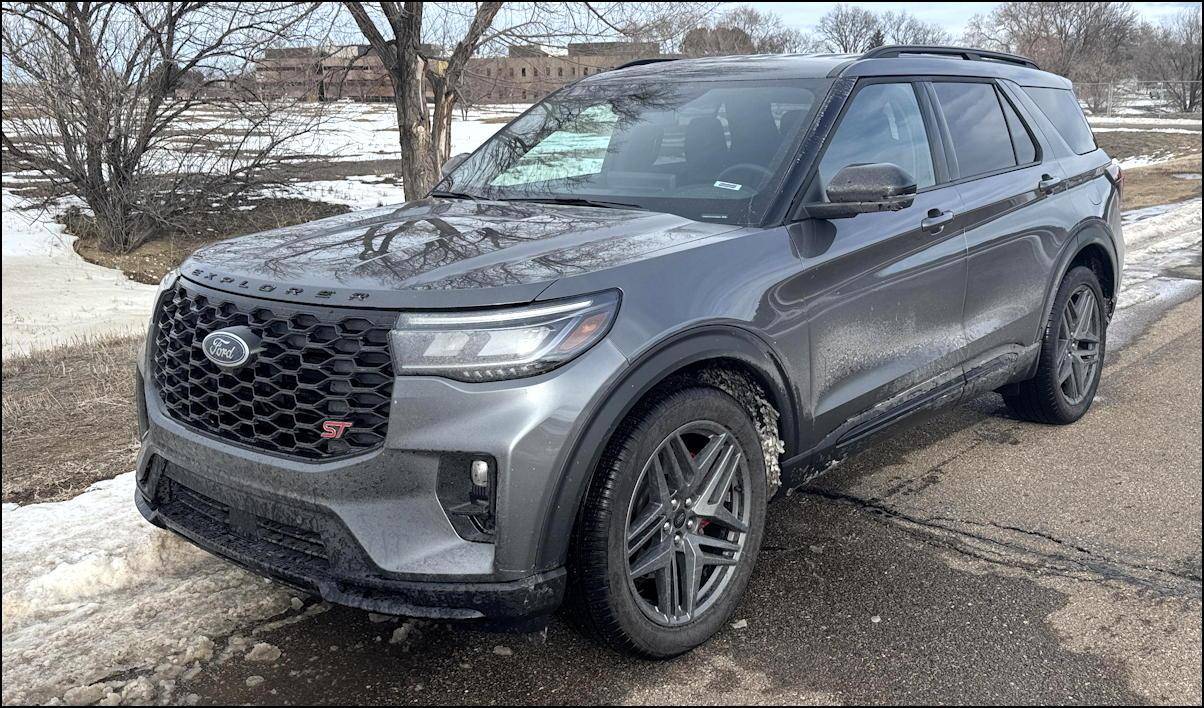I have to admit I have always liked the Ford Explorer. We had one many years ago, a mid-90's model that was a workhorse with plenty of room for our growing family, ready to tackle the worst weather that Northern California could throw at us. It was undoubtedly rear wheel drive but when the worst road conditions were heavy rain, that worked out just fine. In comparison to the compact SUVs that I often drive, the Explorer is a nice mid-size three-row vehicle with plenty of power for towing and challenging driving conditions.
Zoom forward quite a few years and I'm still keeping an eye on the Explorer as Ford's midsize SUV, neatly slotted in between the smaller Escape and the bigger Expedition. When I had a chance to drive a 2025 Ford Explorer ST RWD for a week here in Colorado, I was most eager to get behind the wheel. How much had the Explorer evolved in the interim years? How would the rear-wheel drive work in a frigid Colorado winter?
Let's start at the beginning, however, with a photo of the vehicle, in its swanky Carbonized Gray Metallic exterior and Onyx ActiveX Seats. This is the ST trim level:
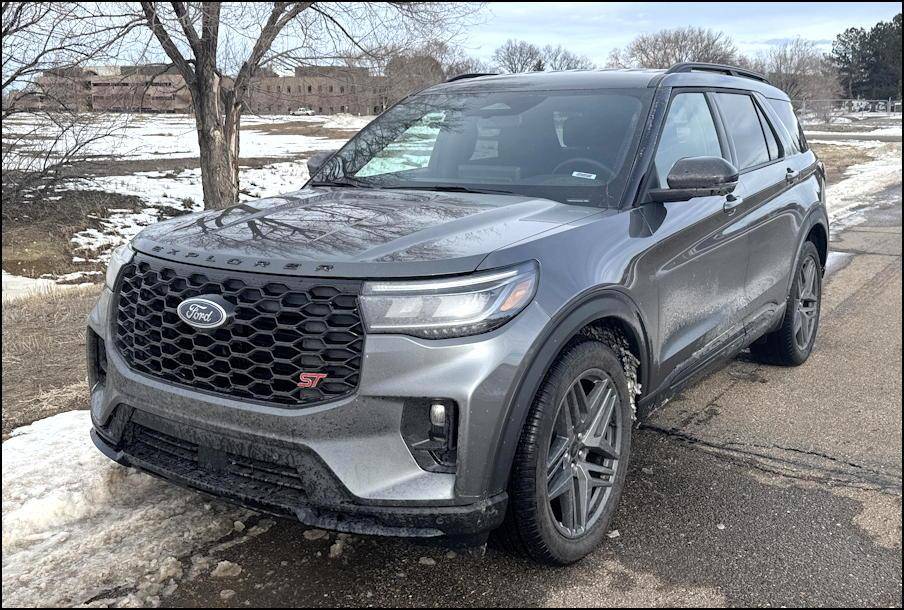
You can see that the ST badging is pretty obvious, but otherwise, it's an entirely functional front grill and design. It's not going to turn any heads, but people don't buy Explorers to impress their neighbors but to keep their families safe. The wheels are upgraded "ST" wheels and do offer a bit of a sporty touch, and the placement of the headlights offers a bit of a frowny nighttime view that's satisfyingly aggressive (even if it's not really an aggressive car).
Moving into the vehicle, the dashboard is updated, but still remains rooted in functionality, not elegance:
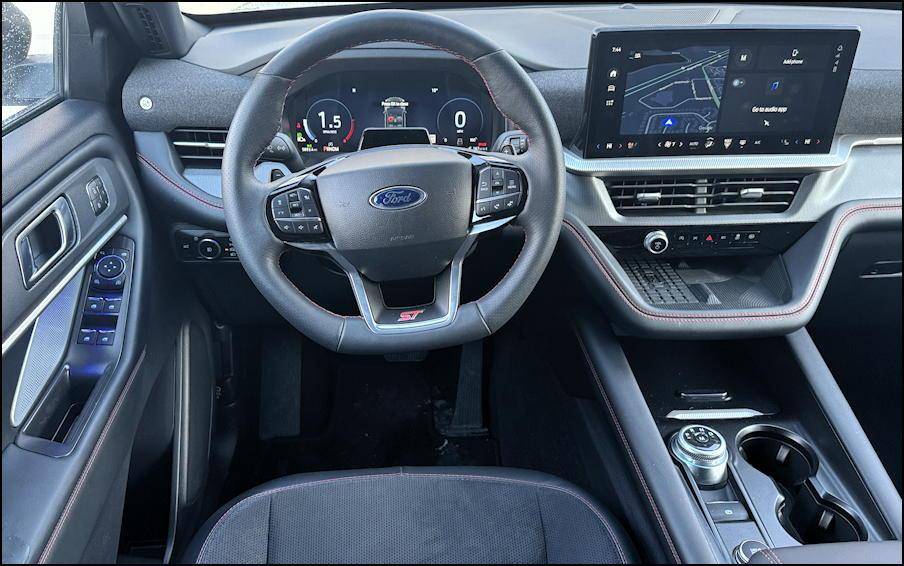
There are, however, a lot of elements that reflect years of tweaking and refining the design, notably including one of my favorites, the central tray for smartphones - including Qi wireless charging - and other devices you want to have easily accessible. Overall, it's pleasantly streamlined with fewer buttons and controls than most vehicles nowadays. Let's start with the steering wheel controls so you can see what I mean:
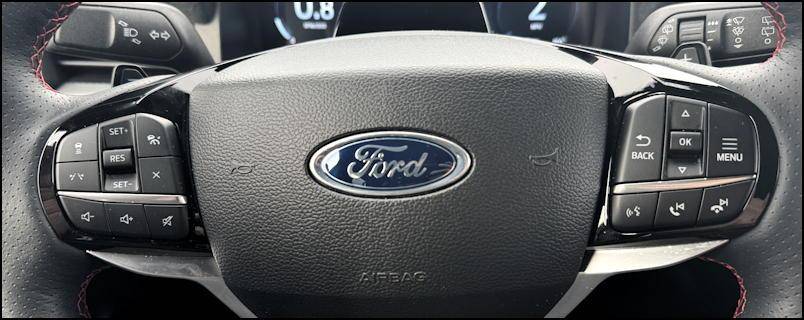
The left cluster is the Adaptive Cruise Control functions, along with a few other driving safety controls and audio volume, including a mute button, which is rare in vehicles! The right side are mostly related to managing the main gauge display screen, with a few additional buttons for voice navigation and managing phone calls for a paired smartphone. Speaking of smartphones, the vehicle includes wireless Apple CarPlay and Android Auto. One really nice thing about the modern implementations built around Bluetooth 5.0 and above are that they connect and start almost instantly, unlike my 2017 Mazda which typically takes 15-20 seconds to connect and start playing music.
Riddle Me This: As with most every vehicle, the indicators for the horn are trumpets. Is this something we'll see in vehicles for all of eternity? How many younger buyers even know what that symbol represents?
Speaking of the main display, it's one area where you can see a lot of improvements by Ford:
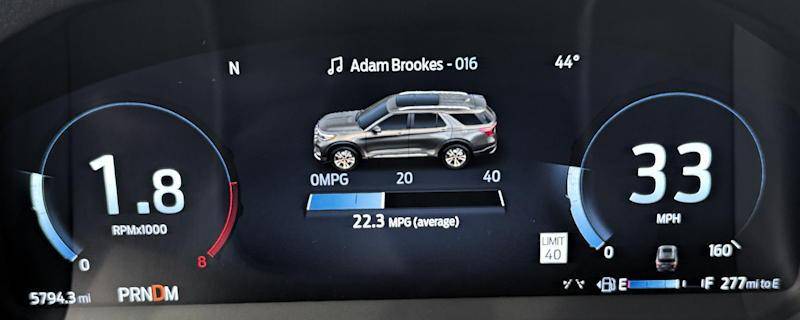
There are a number of different layouts from which you can select, with a "calm mode" the most minimalist. The above is a digital interpretation of some classic gauges, including tachometer on the left and speedometer on the right. You can also see that the fuel efficiency isn't great at 22.3mpg (EPA are 18/25) but for a three-row SUV, it's not too bad either. As with the rest of the Ford lineup, there are quite a few different options for information display and layout if you want to spend some time fiddling with settings.
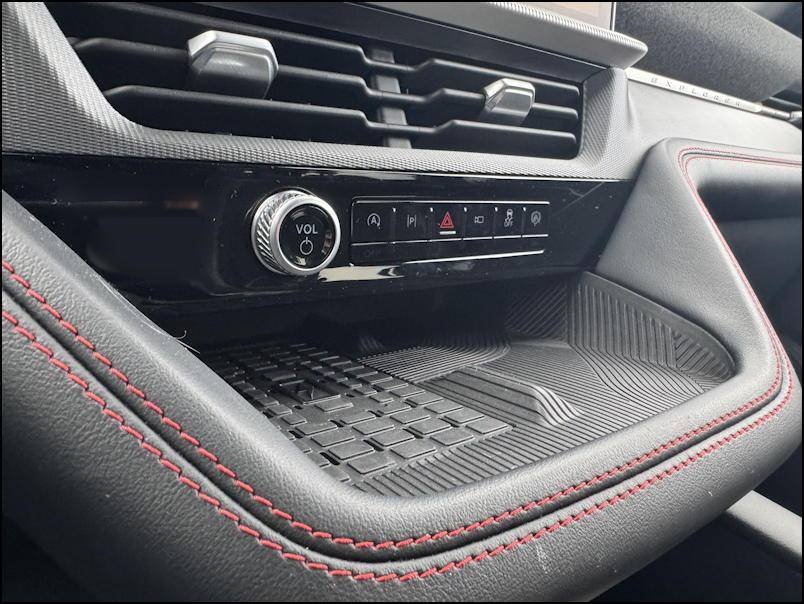
I spoke earlier about the Qi wireless charging tray and here it is, in all its glory. You can also see the red accent stitching that helps weave together the ST details of the Explorer. I found this tray with its convenient access to the infotainment volume and various safety features (including the parking camera) quite convenient, probably one of my favorite features overall with the interior design.
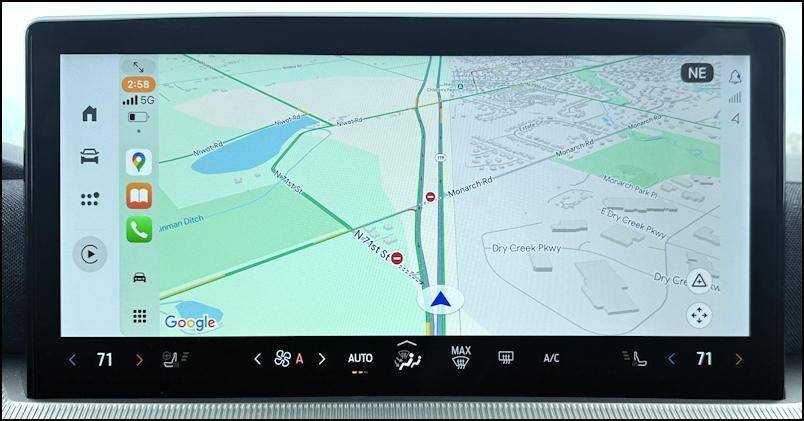
Above it is the bright, colorful 13.2" LCD infotainment screen. Along the let side are basic infotainment navigation controls, while the entire climate control feature set is neatly tucked into the bottom touch panel area. Touching a climate control would generally pop up an informational window with more granular setting options. All neatly implemented.
Nowhere reflects the simple design of the new Explorer than the center console, which is a nice meld of functionality and design:
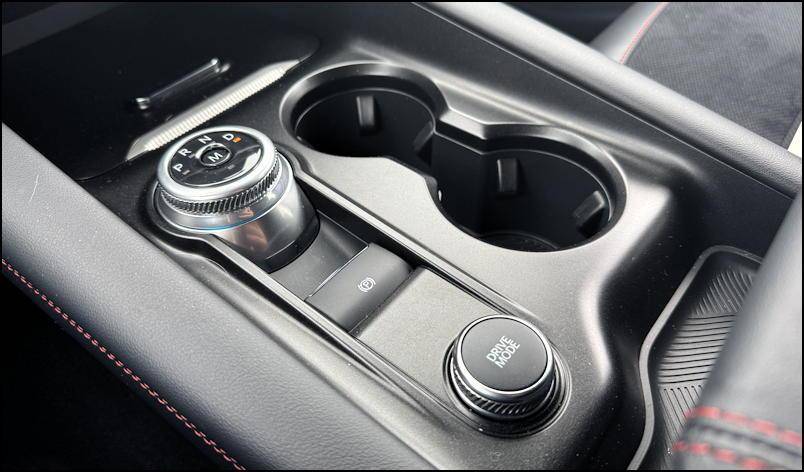
No dozen buttons and switches, no remote controls for the Infotainment system, just a knob for drive modes, a parking brake control, and a simple rotating dial for gears. Having said that, I missed the classic gearshift stick, though I got used to the dial almost immediately and honestly, how often do you change gears, particularly with the 10-speed automatic transmission?
Moving to the back, there was plenty of cargo space, something that's always been a strong point with the Explorer:
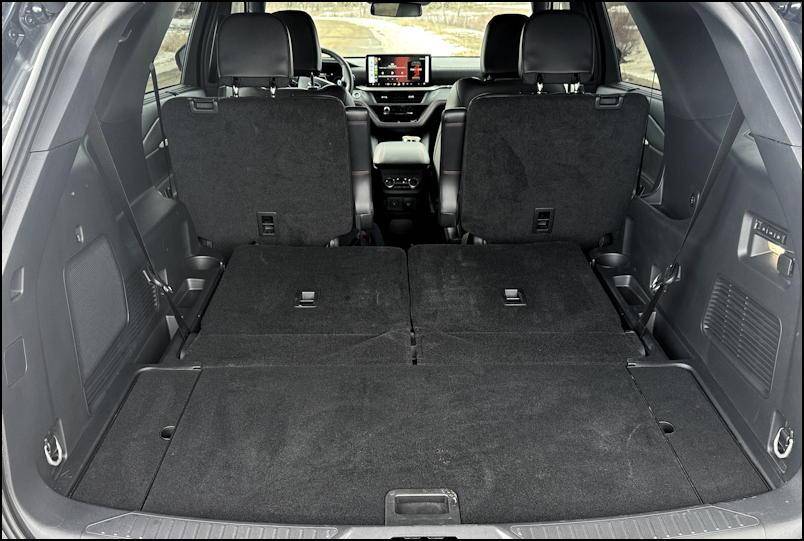
This is with the third row seats lowered, which, of course, you don't have to do manually. How... gauche! Instead, Ford has a nice little control panel on the right side, easily accessible from the rear hatch:
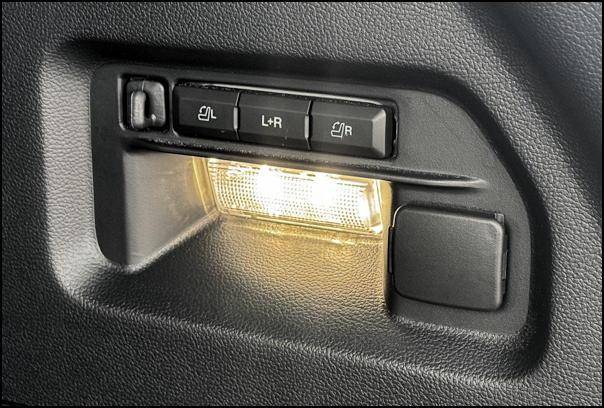
It's a nice control center that makes adjusting the configuration of the 2025 Ford Explorer ST a breeze, whether you're in the hardware store parking lot waiting to load up your supplies or at Costco with the kids and just realized you need a bit more depth for the new lawn ornaments you couldn't resist buying!
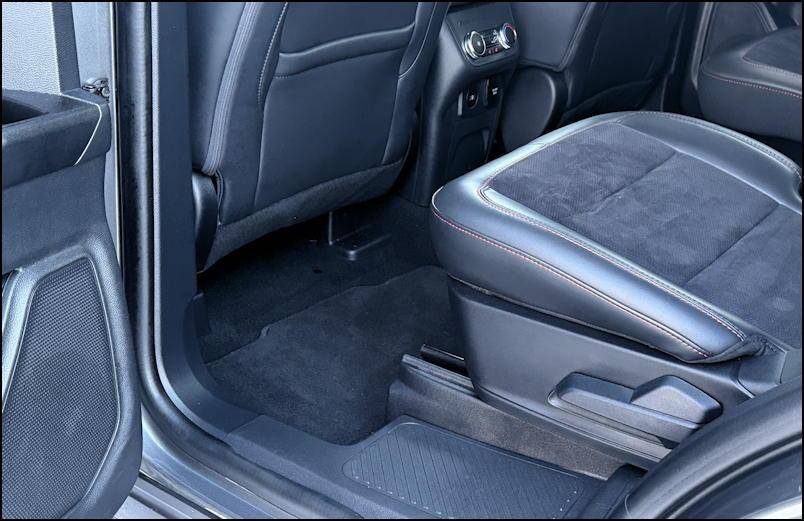
Not only is the third row easily controlled, but the second row offers entirely adequate legroom for adults, with the middle seats adjustable forward and backward.Also notice the materials of the seat, the plush, softer material of the seat portion and the more traditional leather finish of the sides. This is the "ActiveX" faux leather that Ford uses across most of its vehicles now, and it's hard to differentiate from the real thing. Soft, flexible, and comfortable. They're also more stain and moisture-resistant than cloth seats.
And finally, we're back to the exterior of the vehicle:
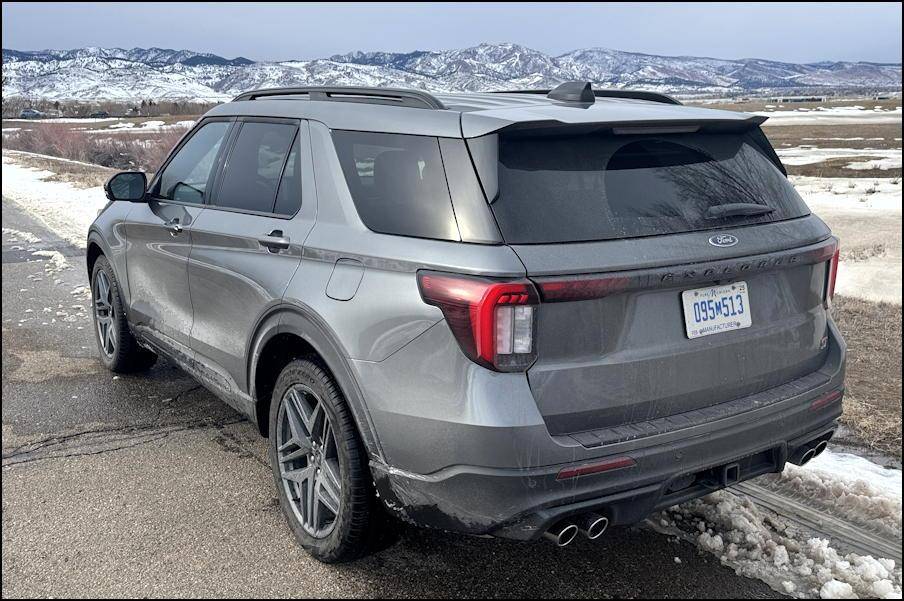
What the above photo doesn't show is just how miserable the road conditions were for most of my loan: My street remains covered in 2-3 inches of ice, and sidestreets in the area have all frozen and melted, frozen and melted, so that they have plenty of slippery surfaces. This was not a surface that the rear-wheel drive Explorer liked and I found myself slipping and sliding all over the place. At one point I had to rock back and forth (F, R, F, R) to inch out of an iced-over parking spot, feeling the drive wheels spin enthusiastically even as I didn't move an inch.
This isn't the fault of the rear wheel drive system - which even had a snow/slippery drive mode option - but the fact that it's just a bad match with Colorado winter driving conditions. Would snow tires have helped? Yes. Would AWD, 4WD, or 4x4 have helped? Yes. Would front-wheel drive been better? Also, yes. Even the Ford agency people warned me that the RWD wasn't going to offer great performance if the weather turned poor. Conclusion: Some vehicles are more fair weather than others, and while I absolutely enjoyed everything about the 2025 Ford Explorer, if I was going to purchase one, I would definitely opt for an AWD model for better winter traction.
Having said that, let me reiterate that there's a lot to really like with the Explorer, it's a big, comfortable vehicle with an enjoyable drive experience and oodles of space for friends and family - and even some cargo. If you need to tow a trailer, jetski, or boat, it also has up to 5,000 pounds of towing capacity. The ST package adds a 3.0L EcoBoost V6, 10-speed automatic transmission, sport-tuned suspension and brakes, the 21-inch wheels, ActiveX seats, and 14-speed Bang & Olufsen sound system. You can also get the ST trim and AWD, if you're curious. All in all, the Ford Explorer continues to be a solid choice for three-row SUVs. Just seriously consider whether AWD wouldn't be a better choice than the default RWD configuration.
2025 Ford Explorer ST RWD with 3.0L EcoBoost V6 Engine and 10-speed automatic transmission. BASE PRICE: $55,505. No options were added (it was already the ST model), so the only additions were destination and delivery charges. PRICE AS DRIVEN: $57,100.00.
Disclosure: Ford loaned me the Explorer ST for a week in return for this candid write-up. This article originally appeared on PlanetDave.com with the title The 2025 Ford Explorer ST RWD: Not a Great Winter SUV and is republished with permission.
Hey Dave Taylor wants you to share this!
